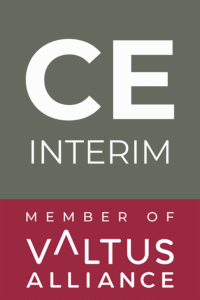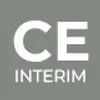Nemáte dosť času na prečítanie celého článku? Vypočujte si zhrnutie za 2 minúty.
Prvé stretnutie s klientom Interim Executive je viac ako len formalita; je to rozhodujúca príležitosť na nastavenie tónu pre celú zákazku. Nadviazanie dôvery a budovanie pevných vzťahov hneď na začiatku môže pripraviť pôdu pre úspešné zadanie interim manažmentu.
Táto príručka vám poskytne stratégie a osvedčené postupy potrebné na to, aby ste toto kritické prvé stretnutie zvládli s istotou, čím si vybudujete dôveru, podporíte zmysluplné vzťahy a pripravíte pôdu pre úspešné dočasné projekty.
I. Pochopenie úlohy dočasného riadiaceho pracovníka
A. Definícia a zodpovednosť
Dočasný výkonný riaditeľ preberá kľúčovú vedúcu úlohu v čase prechodu alebo krízy. Na rozdiel od stáleho riadiaceho pracovníka musíte rýchlo vyhodnotiť situáciu, implementovať stratégie a dosiahnuť výsledky. Medzi vaše povinnosti môže patriť stabilizácia prevádzky, riadenie strategických iniciatív a usmerňovanie významných zmien, ktoré sú nevyhnutné pre úspešné dočasné riadenie..
B. Jedinečné výzvy vo vzťahoch s klientmi
Budovanie vzťahov s klientmi je v rámci dočasného riadenia prirodzene náročná. Klienti môžu byť skeptickí, pokiaľ ide o schopnosť dočasného vedúceho porozumieť ich spoločnosti. Vaša schopnosť rýchlo si vybudovať dôveru je kľúčová. Musíte vyvážiť dôveru a autoritu s pokorou a skutočným záujmom o potreby klienta, aby ste podporili produktívny vzťah.
II. Príprava na prvé stretnutie s klientom
Príprava je základom úspešného dočasného manažmentu. Práca, ktorú vykonáte pred stretnutím, pripraví pôdu pre produktívnu a dôveru budujúcu interakciu.
A. Výskum a náležitá starostlivosť
1. Pochopenie minulosti klienta
Ak chcete urobiť silný prvý dojem, oboznámte sa s históriou, poslaním, hodnotami a kultúrou spoločnosti klienta. Tento prieskum ukáže, že ste skutočne zainteresovaní do ich podnikania a odhodlaní poskytovať hodnotné riešenia.
2. Identifikácia kľúčových zainteresovaných strán
Je veľmi dôležité poznať kľúčové zainteresované strany, ktoré sa zúčastnia na prvom stretnutí dočasných vedúcich pracovníkov. Pochopenie ich úloh a priorít vám pomôže prispôsobiť komunikáciu a zamerať diskusiu na to, čo je pre každú osobu najdôležitejšie.
3. Vykonanie analýzy konkurencie a trhu
Vykonanie analýzy konkurencie a trhu poskytuje prehľad o postavení klienta na trhu. Táto širšia perspektíva vám umožní ponúknuť počas stretnutia cielenejšie rady a preukázať dôkladné pochopenie podnikateľského prostredia.
B. Stanovenie jasných cieľov stretnutia
1. Definovanie úspechu
Pred stretnutím definujte, ako vyzerá úspech. To môže zahŕňať nadviazanie vzťahu, pochopenie očakávaní klienta a určenie okamžitých priorít. Jasné ciele pomáhajú viesť rozhovor, čím sa zabezpečí, že stretnutie bude produktívne a zároveň zamerané na posúdenie potrieb klienta.
2. Identifikácia kľúčových tém
Dobre štruktúrovaný program je základom pre efektívne zasadnutia. Zamerajte sa na aktuálne výzvy spoločnosti, bezprostredné a dlhodobé ciele a na to, ako môžu vaše schopnosti klientovi čo najlepšie pomôcť.
III. Tvorba efektívneho programu stretnutia
Dobre zostavený program zabezpečí, že diskusia zostane sústredená, pokryje všetky potrebné témy a pomôže vybudovať dôveru a dôveryhodnosť.
A. Úvod a úvodné nadviazanie kontaktu
1. Osobné predstavenie
Začnite prvé stretnutie s klientom Interim Executive krátkym osobným predstavením, ktoré vytvorí vašu dôveryhodnosť bez toho, aby ste klienta zahltili. Povzbuďte každého účastníka, aby sa predstavil, čím vytvoríte atmosféru spolupráce.
2. Nadviazanie kontaktu
Nadviazanie vzťahu na začiatku stretnutia je veľmi dôležité. Srdečný pozdrav, udržiavanie očného kontaktu a prejavenie úprimného záujmu o podnikanie klienta pomáhajú vytvoriť pozitívny tón diskusie. Toto sú základné tipy pre obchodné vzťahy, ktoré môžu výrazne zvýšiť efektivitu stretnutia.
B. Pochopenie potrieb a očakávaní klienta
1. Kladenie otázok s otvoreným koncom
Zapojte klientov pomocou otvorených otázok, aby ste získali hlbší prehľad o ich problémoch, cieľoch a očakávaniach. Aktívne počúvanie je kľúčovým prvkom rozvoja dôvery v podnikaní a dokazuje, že si ceníte ich príspevky.
2. Precvičovanie aktívneho počúvania
Aktívne počúvanie zahŕňa plné zapojenie sa do rečníka a pochopenie jeho posolstva. Táto zručnosť je obzvlášť dôležitá pri posudzovaní potrieb klienta, pretože vám umožní zachytiť nuansy jeho problémov a zabezpečiť, aby vaše riešenia boli prispôsobené jeho špecifickým potrebám.
C. Prezentácia vašej hodnoty
1. Rozprávanie vášho príbehu
Predstavte svoju ponuku hodnoty tým, že svoje zručnosti a skúsenosti zosúladíte s konkrétnymi výzvami klienta. Zdieľanie relevantných úspešných príbehov, v ktorých ste riešili podobné problémy, môže byť obzvlášť účinné pri demonštrovaní vašej schopnosti prispieť k úspešnému riešeniu interim manažmentu.
2. Zosúladenie s cieľmi klienta
Výslovne zosúlaďte svoje zručnosti s cieľmi klienta. Ukážte, ako sa váš prístup a doterajšie úspechy môžu prejaviť pri dosahovaní cieľov klienta, a predstavte sa ako partner v jeho úspechu. Toto zosúladenie je kľúčové pre budovanie vzťahu s klientom.
IV. Budovanie dôvery a dôveryhodnosti na prvom stretnutí s klientom
Dôvera a dôveryhodnosť sú pri osvedčených postupoch dočasného vedenia kľúčové. Tu je návod, ako si ju rýchlo a efektívne vybudovať počas prvého stretnutia s klientom.
A. Význam transparentnosti
1. Otvorená komunikácia
Transparentnosť je základom rozvoja dôvery v podnikaní. Od začiatku si ujasnite svoju úlohu, ciele a prístup. Otvorená komunikácia ubezpečí klienta, že ste zameraní na pomoc pri dosahovaní jeho cieľov.
2. Stanovenie realistických očakávaní
Od začiatku nastavte realistické očakávania. Úprimne prediskutujte ciele a časové plány a uistite sa, že sú uskutočniteľné. Tento prístup buduje dôveru tým, že preukazuje váš záväzok dosiahnuť zmysluplné výsledky, čo je hlavnou zásadou osvedčených postupov dočasného vedenia.
B. Preukázanie záväzku
1. Stratégie následných opatrení
Kľúčom k preukázaniu záväzku je dôsledné sledovanie. Po prvom stretnutí s dočasným vedúcim pracovníkom pošlite podrobné zhrnutie diskusie, v ktorom zdôrazníte kľúčové body, dohodnuté opatrenia a ďalšie kroky. Pravidelná komunikácia pomáha budovať pevnejší vzťah a zabezpečuje súlad s procesom nástupu vedúcich pracovníkov.
2. Nepretržité zapojenie
Budovanie dôvery je nepretržitý proces. Zostaňte proaktívni pri identifikácii problémov a príležitostí, ponúknite riešenia a buďte k dispozícii na diskusiu o problémoch, keď sa vyskytnú. Táto neustála angažovanosť je pre úspešný interim manažment nevyhnutná.
V. Bežné nástrahy, ktorým sa treba vyhnúť pri prvom stretnutí s klientom
Zvládnuť prvé stretnutie s klientom ako dočasný vedúci pracovník môže byť zložité. Vyhnúť sa bežným nástrahám môže znamenať rozdiel medzi úspešnou zákazkou a neúspešným začiatkom.
A. Nadmerné rozprávanie
1. Sila počúvania
Vyhnite sa dominancii v konverzácii. Zamerajte sa na kladenie dômyselných otázok a pozorné počúvanie odpovedí. Tento prístup dokazuje, že ste tu preto, aby ste slúžili záujmom klienta, a je kľúčovou súčasťou osvedčených postupov pri stretnutiach s klientmi.
B. Nesprávne čítanie potrieb klientov
1. Vyhýbanie sa predpokladom
Nepredpokladajte, že poznáte potreby klienta skôr, ako úplne preskúmate jeho situáciu. Využite stretnutie na to, aby ste hlbšie prenikli do jeho problémov, cieľov a očakávaní. Aktívnym počúvaním a kladením objasňujúcich otázok zabezpečíte súlad s procesom hodnotenia potrieb klienta.
2. Význam validácie
Predtým, ako sa posuniete ďalej, overte si, či rozumiete potrebám klienta. Predídete tak nedorozumeniam a vybudujete si dôveru tým, že ukážete, že ste odhodlaní urobiť veci správne.
C. Ignorovanie neverbálnych signálov
1. Porozumenie reči tela
Neverbálna komunikácia je kľúčová v situáciách, keď ide o vysokú mieru rizika, ako je prvé stretnutie s klientom. Venujte pozornosť reči tela, výrazu tváre a tónu hlasu klienta, aby ste sa uistili, že ste situáciu správne pochopili.
2. Prispôsobenie vášho prístupu
Upravte svoj štýl komunikácie na základe neverbálnej spätnej väzby klienta, aby ste si udržali vzťah a udržali stretnutie v správnom smere. Táto prispôsobivosť je charakteristickým znakom úspešného interim manažmentu.
VI. Stratégie po stretnutí pre úspech prvého stretnutia s dočasným vedúcim pracovníkom
Prvé stretnutie s klientom sa nekončí, keď opustíte miestnosť. To, čo sa deje potom, je rovnako dôležité. Stratégie po stretnutí sú nevyhnutné na upevnenie vzťahu a vytvorenie podmienok pre úspešnú dočasnú spoluprácu.
A. Okamžité následné opatrenia
1. Zhrnutie kľúčových bodov
Bezprostredne po stretnutí pošlite následný e-mail, v ktorom zhrniete kľúčové body, o ktorých sa diskutovalo, vrátane všetkých dohodnutých opatrení, termínov a ďalších krokov. Tým preukážete profesionalitu a pozornosť venovanú detailom, ktoré sú kľúčovými prvkami procesu nástupu vedúcich pracovníkov.
2. Potvrdenie ďalších krokov
Následnú komunikáciu využite na potvrdenie ďalších krokov. Či už ide o naplánovanie ďalšieho stretnutia alebo začatie práce na konkrétnom projekte, uistenie sa, že obe strany sú v súlade, je nevyhnutné na udržanie dynamiky a predchádzanie nedorozumeniam.
B. Reflexia a prispôsobenie
1. Sebahodnotenie
Po stretnutí sa zamyslite nad jeho priebehom. Zvážte, čo fungovalo dobre a čo sa dalo zlepšiť. Toto sebahodnotenie vám umožní vylepšiť váš prístup k budúcim interakciám a je neoddeliteľnou súčasťou osvedčených postupov dočasného vedenia.
2. Prispôsobenie stratégií
Na základe svojich úvah buďte pripravení upraviť svoje stratégie do budúcnosti. Neustále zlepšovanie je kľúčom k úspešnému interim manažmentu a zaručuje, že budete spĺňať potreby klienta v priebehu zákazky.
VII. Záver
Prvé stretnutie s dočasným vedúcim pracovníkom je kľúčovým momentom na vašej ceste dočasného vedenia. Pochopením svojej úlohy, dôkladnou prípravou, zostavením efektívneho programu a vybudovaním dôvery prostredníctvom transparentnosti a angažovanosti môžete zabezpečiť úspešné prvé stretnutie, ktoré povedie k produktívnemu a pozitívnemu vzťahu.
Zamerajte sa na aktívne počúvanie, vyhýbajte sa častým nástrahám a dôsledne sledujte, aby ste upevnili vzťah a pripravili pôdu pre trvalý úspech. Uplatňovaním týchto stratégií a tipov pre obchodné vzťahy môžete prekonať očakávania klientov, čo v konečnom dôsledku povedie k úspešnej a plnohodnotnej spolupráci.
Často kladené otázky
Na čo by sa mal dočasný vedúci pracovník zamerať počas prvého stretnutia s klientom?
Dočasný vedúci pracovník by sa mal zamerať na pochopenie potrieb klienta, vybudovanie dôvery a stanovenie jasných očakávaní. Aktívne počúvanie, transparentnosť a dobre pripravený program sú kľúčom k úspešnému prvému stretnutiu.
Ako môžem zabezpečiť rýchle vybudovanie dôvery u nového klienta?
Rýchle budovanie dôvery zahŕňa otvorenú komunikáciu, stanovenie realistických očakávaní a preukázanie záväzku prostredníctvom dôsledného sledovania a angažovanosti. Transparentnosť a plnenie sľubov sú kľúčové.
Akým častým chybám sa treba vyhnúť na prvom stretnutí s klientom?
Medzi najčastejšie chyby patrí prílišné rozprávanie, vytváranie predpokladov o potrebách klienta a ignorovanie neverbálnych signálov. Je dôležité viac počúvať, ako hovoriť, a overiť si, či rozumiete problémom klienta.
Prečo je aktívne počúvanie dôležité na prvom stretnutí s klientom?
Aktívne počúvanie je dôležité, pretože vám pomôže plne pochopiť obavy a potreby klienta, čo vám umožní efektívnejšie prispôsobiť vaše riešenia. Klientovi tiež ukazuje, že si ceníte jeho príspevky, čo je nevyhnutné pre budovanie dôvery.
Ako mám postupovať po prvom stretnutí s klientom?
Po prvom stretnutí pošlite podrobný následný e-mail, v ktorom zhrniete diskusiu, potvrdíte ďalšie kroky a zopakujete svoj záväzok k úspechu klienta. Preukážete tým profesionalitu a pomôžete udržať angažovanosť na správnej ceste.
Čo mám robiť, ak prvé stretnutie s klientom neprebieha podľa plánu?
Ak prvé stretnutie neprebieha podľa plánu, zamyslite sa nad tým, čo sa nepodarilo, a upravte svoj prístup pri ďalších stretnutiach. Neustále zlepšovanie a prispôsobivosť sú kľúčom k úspešnému interim manažmentu.





